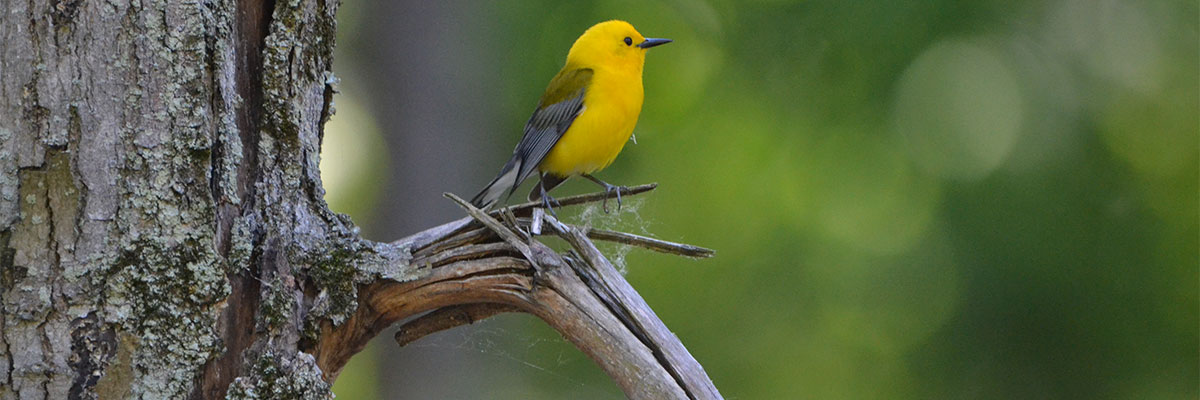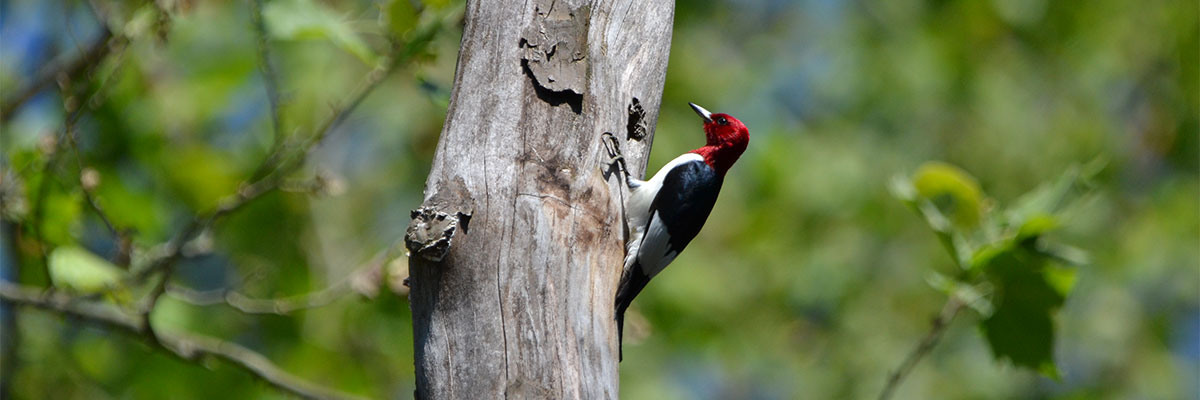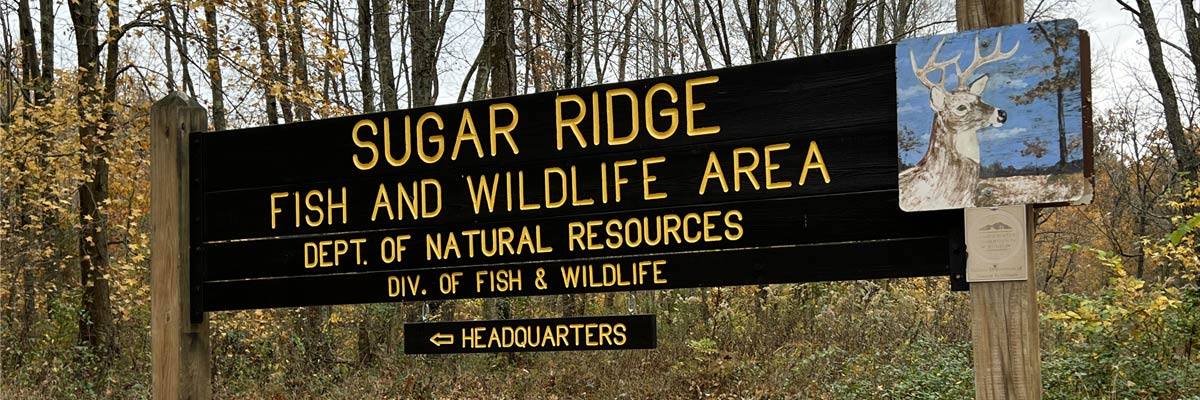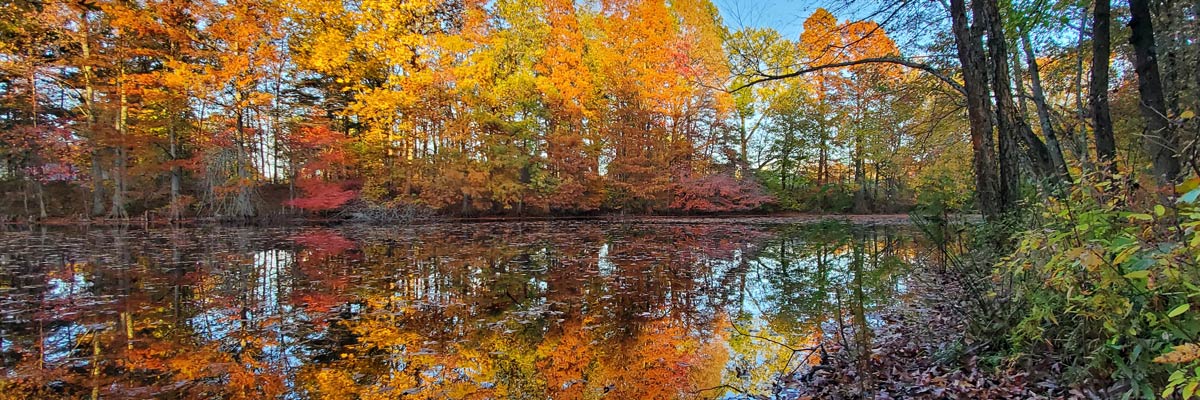- Sugar Ridge FWA Alerts
- None at this time.
Description
Sugar Ridge FWA provides quality hunting, fishing, and wildlife watching opportunities. The property is made up of six separate areas, totaling approximately 8,500 acres. The strip-mined land now features around 100 pits and lakes, along with rows of overburden from the mining operation. The land that has not been mined remains mostly rough and rolling.
A large part of Sugar Ridge FWA’s land (Areas 1, 2 and 3) was once leased from Amax Coal Company. The leasing began in 1964 and continued until 1980 when most of the land was donated to the Division of Fish & Wildlife. Currently, only Area 6 is still leased through Gray Farms, Inc.
Most revenues used in land acquisition, development, operation, and maintenance of Sugar Ridge FWA are derived from the sale of hunting, fishing, and trapping licenses. Funds are also received from the federal Pittman-Robertson and Dingell-Johnson programs to aid fish and wildlife restoration. These funds are derived from taxes levied on sport hunting, shooting, and fishing equipment. Indiana hunters and anglers are proud to provide this property for the enjoyment of all people.
Fishing, hunting, trapping, wildlife watching and birding, and using the shooting range are the most popular activities.
- Amenities
- A portable toilet is available at the shooting range. Open 24/7.
- A modern public restroom is located at the headquarters. Open 24/7.
Popular activities
All hunters, range users, and dog runners are required to sign in and obtain the appropriate one-day access permit before entering the field at this property. The one-day permit card must be completed and returned to a self-service booth, drop box, or property office before you leave.
All other visitors are encouraged to obtain a miscellaneous one-day access permit before entering the field. The one-day access permit should be kept with you while visiting, then completed and returned to a self-service booth, drop box, or the office before you leave. The information you provide will help us identify ways to improve Indiana’s FWAs for all users. We appreciate your patience in taking the extra time to complete the permit. Your feedback and comments are valuable to us.
- Fishing
- Sugar Ridge FWA provides approximately 145 acres in 24 major fishing pits.
- Major fish species include bluegill, redear, channel catfish, and largemouth bass. See the Where to Fish map for the best fishing locations.
- Only electric motors with a 12-volt max are permitted.
- Boat ramps are available at most pits on Areas 1, 2, 3, and 6.
- Please park in designated lots.
- Accessible fishing areas are available on West Twin pit (Area 1) and Pigeon Pit (Area 2). Ask the office for details.
- Shoreline fishing is available at West Twin, Lotor, Pigeon, Whitney, Ashby, Island, Prairie, Cattail, Timberdoodle, and Barrett pits.
- Bow and spear fishing is permitted according to state fishing laws.
- All state size and bag limits apply, including the 14-inch minimum size limit for largemouth bass.
- No boat rental is provided.
- Hunting
- Hunting for deer, quail, rabbit, squirrel, and wild turkey is common at Sugar Ridge FWA.
- All hunting seasons and bag limits apply. See Hunting Regulations for details.
- Night and predator hunting is provided by self-service check in.
- For hunter accessibility information, please contact the office.
Deer
- Deer tree stands and ground blinds may be used and left unattended from noon, Sept. 15 through Jan. 10. Tree stands and ground blinds must be legibly marked in English with either the owner's DNR customer identification number or the owner’s name, address, and telephone number.
- A fastener used in conjunction with a tree stand and a tree or pole climber that penetrates a tree more than ½ inch is prohibited (e.g., screw-in steps and screw-in bow and gun hangers).
- Antlerless deer cannot be taken with a firearm during firearms season at Fish & Wildlife areas, including Sugar Ridge FWA.
- Tern Bar Slough WDCA will host reserved deer hunts during youth, archery, firearms, and muzzleloader seasons. An in-person draw for these hunts will be held at Sugar Ridge FWA on the first Saturday in August at 11 a.m. ET. Doors open at 9 a.m.
Turkey
- Spring turkey hunting opportunities during the first five days of the season are allocated through a preseason online draw.
- Turkey hunting opens to the public the first Monday of the season.
- During spring turkey season, including youth dates, only people signed in to turkey hunt or fish are allowed on the property before 1 p.m. ET.
Upland Game (Dove, quail, rabbit)
- Quail and rabbit hunting is permitted during legal hunting hours on Wednesday and Sunday only.
- There is a 50-shell limit for dove hunting and hunters must use nontoxic shot.
Waterfowl
- Waterfowl hunting is open per state regulations.
- Waterfowl hunters may possess a daily maximum of 25 non-toxic shot shells during teal, duck, and dark goose seasons.
- Tern Bar Slough WDCA will be open to waterfowl hunting in 2026 following the close of deer season.
- Shooting Range
- Shooting ranges for shotgun, rifle, and archery are open to the public on a first-come, first-served basis.
- Area 1 Shotgun Range and Area 3 Shooting Range hours of operation:
- March – December: 9 a.m. – 5 p.m. ET, Wednesday – Sunday
- January – February: 9 a.m. – 5 p.m. ET, Friday – Sunday
- Closed: Thanksgiving Day, Christmas Day, and New Year’s Day
- Archery Range
- Open daily sunrise to sunset.
- Area 3 shooting range includes 7, 10, 25, 50, 100, and 200 yard ranges.
- Area 3 archery range includes 10, 20, 30, and 40 yard ranges.
- All shooters must read and obey range rules and regulations. When shooters are finished, the permit card should be filled out and returned at the drop box.
- There is no fee for use.
- A portable toilet is available at the Area 3 shooting range.
- The shotgun, rifle, and archery ranges are all accessible.
- See the Fish & Wildlife Area Shooting Ranges webpage for more details.
- Trapping
- Trapping is only available through a drawing to be held on the first Saturday in October at 9 a.m. ET. Contact Sugar Ridge FWA headquarters for further details.
- View statewide trapping regulations in the Hunting & Trapping Guide.
- Wildlife watching & birding
- 8,500 acres of upland game habitat, wooded reclaimed mine areas and stripper pits attract a wide variety of songbirds, woodpeckers, hawks, and waterfowl.
- During hunting seasons it is recommended that wildlife watching and birding only be done in safety zones when wearing orange or another bright color. Examples of safety zones include the office and shop area.
More activities
- Biking
- Bicycling is allowed on all paved and gravel roads that are open to vehicle travel.
- There are no mountain bike trails and off-road travel is prohibited.
- Camping
- Camping is prohibited.
- Dog running
- Dog training is permitted on Area 3, west of County Road 300 E.
- Dogs must always be leashed outside of the dog running and training area unless being used by a registered hunter in the pursuit of game.
- Only service dogs are allowed inside buildings.
- Foraging
- Mushrooms, berries, and nuts may be gathered; however, a written permit is required to remove plants, animals, rocks, and fossils.
- Please note that during spring turkey season, only persons signed-in to turkey hunt or fish are allowed on the property before 1 p.m. ET. Please call the office for dates and any questions.
- Hiking & walking
- Visitors are encouraged to hike, explore, and enjoy Sugar Ridge.
- Access lanes are mowed a few times a year and are available for a more backcountry hiking experience.
- A 0.3 mile accessible trail is located in Area 1.
- During hunting seasons, it is recommended that hiking and walking only be done in safety zones when wearing orange or another bright color. Examples of safety zones include the office and shop area.
- Water recreation
- About 100 pits and lakes provide fishing and recreational opportunities.
- Boat launch permits are not required.
- Canoeing, kayaking, and paddleboarding are allowed.
- Swimming is prohibited.
- Anyone in a boat, canoe, kayak, or on a paddle board must be in possession of a wearable personal floatation device while on the water.
- Refer to the property map for ramp locations.
- Volunteering
- Need a reason to get outside and move? You can volunteer alone or in small groups at this property. Call the property office for details.
- Some activities include trash pick-up, basic gardening, painting, invasive plant removal, and more.
Other properties managed by this office
- Blue Grass Fish & Wildlife Area (FWA) is a unique natural resource area comprising land that was once strip-mined. The property covers approximately 2,532 acres and features 28 pits and lakes, with around 600 acres of water. Blue Grass provides hunting, fishing and wildlife watching opportunities.
- Little Pigeon Creek Wetland Conservation Area (WCA) offers a vast array of different habitat types and hunting opportunities. The property is divided into five different units totaling just over 1,900 acres of hardwood, bottomland, marshland, and early successional habitat. Units 1 and 2 are just west of Lincoln State Park near Gentryville. Units 3 and 4 are southeast of Tennyson and are divided by S.R. 62. Unit 4 also shares a border with Bloomfield Barrens Nature Preserve to the south. Unit 5 is isolated from the other units and is near the Kentucky border. It is just northwest of Hatfield and is divided almost in half by S.R. 66. Deer, turkey, small game, furbearers, and waterfowl can be found on Little Pigeon Creek WCA. Each unit has a portion of Little Pigeon Creek running through it. Hunting, fishing, and trapping are permitted. Most funds used in land acquisition were derived from the sale of hunting, fishing, and trapping licenses.
- Lost Hill Wetland Conservation Area (WCA) is mostly bottomland hardwoods and emergent wetlands. It is in the northern portion of Warrick County with a parking lot on the south side of S. R. 68 and is divided by Pigeon Creek. This property offers bank fishing on the creek, trapping of furbearers, waterfowl hunting in the wetlands, and deer and small game hunting in the hardwoods. Of the 357 acres, 40 were donated by Peabody Coal Corporation in 1989. The rest of the property was bought over the years using money from federal duck stamp purchases.
- Straight Line Slough Wildlife Management Area (WMA) is a unique mix of early successional floodplain habitat and old forest. Located in northern Pike County, this 179-acre parcel borders the East Fork of the White River. The property is named after the old Straight Line Railroad bed that runs through it. Before Indiana Department of Transportation (INDOT) bought this property for I-69 mitigation, it was mostly farmland. Because this property was transferred to the DNR from INDOT, there is a strict limit to management that can be done; however, there is an abundance of white-tailed deer, gray and fox squirrels, turkey, cottontail rabbit, and more. Hunting, fishing, and trapping are permitted.
- Tern Bar Slough Wildlife Management Area (WMA) has a vast array of wildlife species supported by 800 acres of upland and early successional habitat and is on the western side of Gibson County within 4 miles of the Wabash River. It borders Cane Ridge Wildlife Management Area (managed by Patoka River National Wildlife Refuge) as well as Gibson Lake (owned by Duke Energy). Due to all the water and wetland habitat nearby, the property gets a lot of traffic from migrating waterfowl and shorebirds, making it a unique stop on the Indiana Birding Trail. This property was originally bought and managed for the purpose of helping recover the least tern. Current use of the property includes but is not limited to nature walks, birdwatching, trapping, and hunting (deer and waterfowl only). All users who wish to hunt deer or trap furbearers must secure a permit by attending an in-person draw at Sugar Ridge FWA. Waterfowl hunting opens after the close of deer season.
- General Fish & Wildlife rules and regulations apply, including the restriction of harvesting antlerless deer with a firearm during firearms season. A list of all Fish & Wildlife property rules can be found on the Indiana Fish & Wildlife Area Rules webpage.
- Dog training is not allowed on the above properties; dogs can only be used for active pursuit of game.
- To learn more about the location and types of activity on these properties, view the Where to Hunt map.





